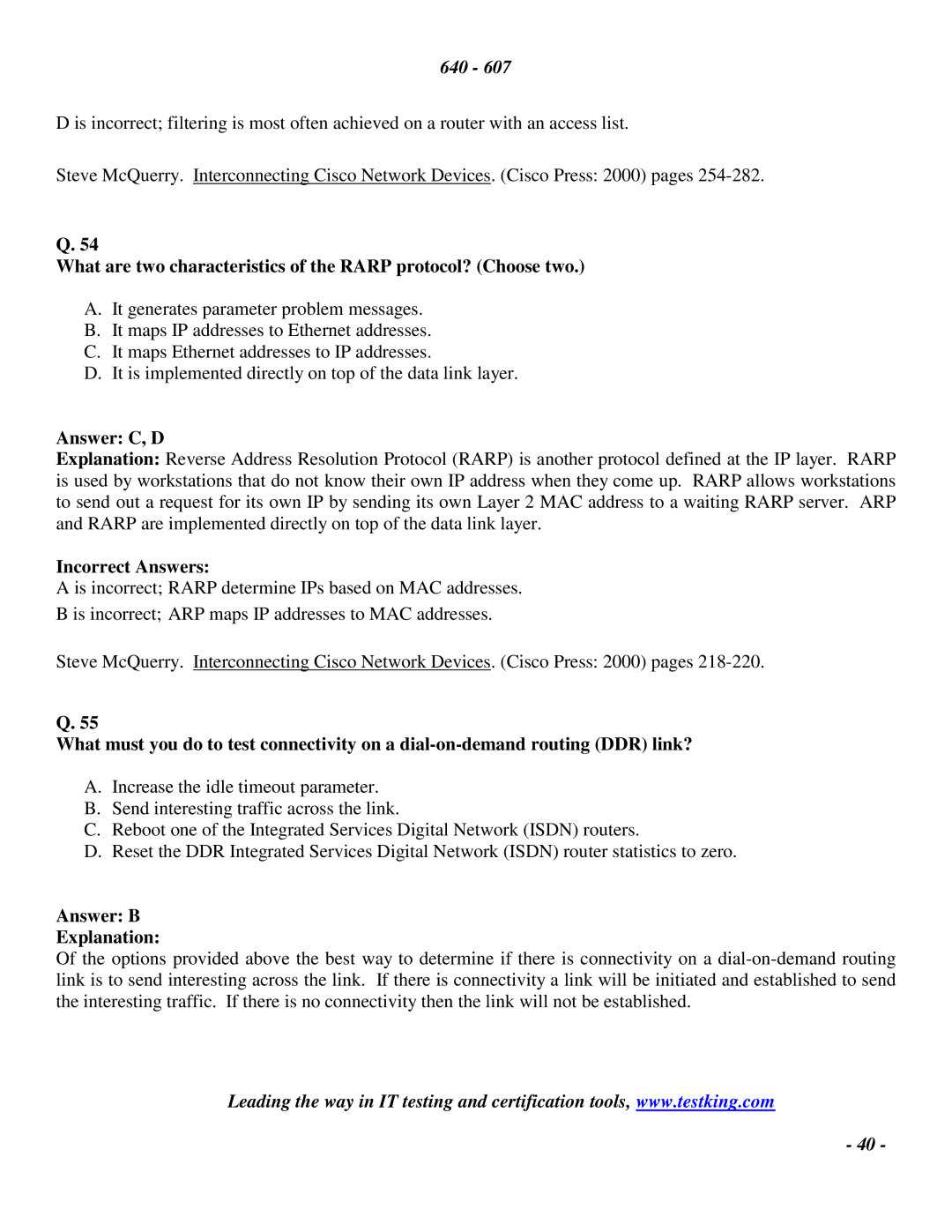640 - 607
D is incorrect; filtering is most often achieved on a router with an access list.
Steve McQuerry. Interconnecting Cisco Network Devices. (Cisco Press: 2000) pages
Q. 54
What are two characteristics of the RARP protocol? (Choose two.)
A.It generates parameter problem messages.
B.It maps IP addresses to Ethernet addresses.
C.It maps Ethernet addresses to IP addresses.
D.It is implemented directly on top of the data link layer.
Answer: C, D
Explanation: Reverse Address Resolution Protocol (RARP) is another protocol defined at the IP layer. RARP is used by workstations that do not know their own IP address when they come up. RARP allows workstations to send out a request for its own IP by sending its own Layer 2 MAC address to a waiting RARP server. ARP and RARP are implemented directly on top of the data link layer.
Incorrect Answers:
A is incorrect; RARP determine IPs based on MAC addresses.
B is incorrect; ARP maps IP addresses to MAC addresses.
Steve McQuerry. Interconnecting Cisco Network Devices. (Cisco Press: 2000) pages
Q. 55
What must you do to test connectivity on a
A.Increase the idle timeout parameter.
B.Send interesting traffic across the link.
C.Reboot one of the Integrated Services Digital Network (ISDN) routers.
D.Reset the DDR Integrated Services Digital Network (ISDN) router statistics to zero.
Answer: B
Explanation:
Of the options provided above the best way to determine if there is connectivity on a
Leading the way in IT testing and certification tools, www.testking.com
- 40 -
